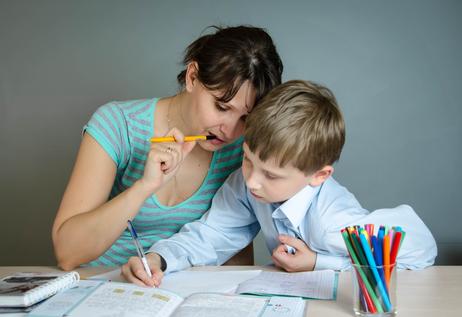Autism is by no means a rare condition, though a great deal of research still needs to be completed to truly understand the cause of this condition and the best way to treat it. If you have a child with autism, getting through the day can be challenging. The thought of sending your autistic child to school – to an environment that could be scary and overwhelming for your child – may cause you to panic. With education and preparation, however, you can get your autistic child ready for school.
In this article, you will learn some background information about autism to help you understand your child's unique challenges in school. You will also receive some detailed tips to help prepare yourself and your child to make the transition into school as smooth as possible. The more prepared you and your child are, the better he can transition into a school setting.
Understanding the Basics of Autism
Autism spectrum disorder, more commonly known as autism, is a general term for complex brain development disorders. Autism affects the child’s social interactions as well as his verbal and nonverbal communication skills and repetitive behaviors. Every child with autism is unique, though in general, autism seems to be rooted in early brain development. Signs of autism tend to manifest between the ages of 2 and 3 years, though they can certainly appear earlier or later. Autism is frequently associated with intellectual disabilities, difficulties with motor coordination, and, in some cases, physical health issues.
According to the U.S. Centers for Disease Control and Prevention (CDC), as many as 1 in 68 American children are on the autism spectrum – studies have also shown that autism is four or five times more common in boys than in girls. As common as autism is, there is no known cause for this disorder, and there is no one type of autism either. Scientists have identified several genetic mutations that may be associated with autism. Still, most cases seem to result from genetic and environmental risk factors. Even though many people with autism struggle with motor coordination or have cognitive delays, as many as 40% have the above-average intellectual ability, and many of those who are nonverbal are still able to communicate via other means. All of this goes to show that an autistic child may not be your “typical” student, but he is just as capable and deserving of receiving a quality education as any other child.
This video gives an overview of autism.
Challenges for Autistic Children in School
Autism comes in many forms and manifests in many ways, which leads to several serious challenges in the school environment. Many of these challenges are related to cognitive processing delays, which may delay the child’s ability to process verbal or written language – autistic students may be just as capable of learning the material as typical students. Still, it may take them a little longer to process it. Another challenge many autistic children face in school is sensory perception issues – a lack of depth perception, a poor sense of balance, or a sensitivity to certain sounds. Social skill deficits are very common in children with autism – this challenge is particularly difficult for teachers to understand and accommodate if they have not had special education training. Autistic students may also suffer from motor skill challenges, which means that simple tasks like taking tests or completing homework could take longer than other students.
In this video, former classroom teacher Shannon Penrod talks about how to deal with challenging behaviors in a classroom so teachers can get back to doing their jobs! Discussion includes the usual suspects of different behaviors and how to deal with them.
Tips for Parents to Make a Smooth Transition
If you have a child with autism, you may need to start preparing him early – before he even sets foot in the classroom. Caring for a child with autism comes with unique challenges, but there are things that parents can do to help make the transition into school as smooth as possible. Here are some tips:
- Start by getting a thorough assessment of your child, such as an Autism Diagnostic Observation Schedule (ADOS), to assess your child’s unique social and communication behavior. Having this detailed information about your child can help develop his IEP.
- Give your child’s teachers specific instructions about how to interact with your child. If your child needs an extra minute to process instructions, make sure his teachers know so they can give him some extra time. If he needs to be shown how to complete a task twice before he can replicate it, make that known as well. Whatever your child’s unique needs may be, make sure his teachers know them.
- If your child is entering an integrated classroom (one with “typical” students and special needs students), ask the teacher to speak to the class about your child’s autism. Forming friendships will be very important for your child. Still, many children can be scared by what they do not understand – learning about your child’s differences upfront can help to prevent your child from being alienated by others in the classroom.
- Stay involved at your child’s school. You do not need to go so far as sitting in the classroom with your child, but you should volunteer at school events and join the PTA to stay up-to-date with school happenings. If you notice room for improvement in the school’s special education program, speak up and work with the school to make changes!
- Be prepared to do some extra work at home. Many autistic students require more repetitions and practice to master key concepts – things that there isn’t enough time in the school day to accomplish. Stay on top of your child’s curriculum and work with him at home as much as possible to ensure he stays on track at school.
- Have a plan for what your child’s teacher should do if your child should happen to have a meltdown. Many autistic children are overly sensitive to noise, lights, crowded situations, or touch. Ensure your child’s teacher understands his sensitivities and tell her how to handle the situation to help your child calm down properly.
This video shows how to help your child transition to the classroom.
Another thing that might help your child make the transition into school smoother is practicing your school routine a week early. Practice driving or walking your child to school and show him where his new classroom will be. If possible, schedule a meet-up with his teacher so she will be familiar with him when he comes to school on that first day. Ensure your child knows how to find the water fountain, bathroom, and any other places he might need to go.
Caring for a child with autism can be very challenging, especially when others, like teachers and fellow students, get involved. Taking a detailed assessment of your child and taking simple steps for preparation can help make the transition as smooth and stress-free as possible. Remember that you must keep working with your child and his teachers throughout the year to ensure he gets the education he needs and makes as much progress as possible.
Questions? Contact us on Facebook. @publicschoolreview












